Geology Reference
In-Depth Information
Linnaeus certainly recognized shared characteristics
among organisms, but his intent was simply to categorize spe-
cies that he thought were specially created and immutable.
Following the publication of Darwin's
On the Origin of Species
in 1859, however, scientists quickly realized that shared charac-
teristics constituted a strong argument for evolution. After all,
if present-day organisms actually descended from ancient spe-
cies, we should expect a pattern of similarities between closely
related species and fewer between more distantly related ones.
have basically the same arrangement of muscles, nerves, and
blood vessels; all are similarly arranged with respect to other
structures; and all have a similar pattern of embryonic devel-
opment (
Figure 18.14). These
homologous structures
, as
they are called, are similar even though they may serve differ-
ent functions—flying versus running, for example—but all
were derived from a common ancestor and therefore indicate
evolutionary relationships. However, there are some similarities
that do not indicate descent from a common ancestor.
Analo-
gous structures
may be superfi cially similar and serve the same
function, as in the wings of insects and birds, but they are dis-
similar in structure and development (
◗
Support Evolution?
Life is incredibly diverse—scientists have described at least
1.5 million species and estimate that there may be as many
as several tens of millions not yet recognized. And yet, if
existing organisms evolved from common ancestors, there
should be similarities among all life-forms. As a matter of
fact, all living things—be they bacteria, redwood trees, or
whales—are composed mostly of carbon, nitrogen, hydro-
gen, and oxygen. Furthermore, their chromosomes consist
of DNA, and all cells synthesize proteins in essentially the
same way.
Studies in biochemistry also provide evidence for evo-
lutionary relationships. Blood proteins are similar among
all mammals, but also indicate that humans are most closely
related to great apes, followed in order by Old World mon-
keys, New World monkeys, and lower primates such as lemurs.
Biochemical tests support the idea that birds descended from
reptiles, a conclusion supported by evidence in the fossil record.
The forelimbs of humans, whales, dogs, and birds are su-
perfi cially dissimilar. Yet all are made up of the same bones; all
Figure 18.15).
Why do dogs have tiny, functionless toes on their back
feet or forefeet or, in some cases, on all feet (
◗
Figure 18.16a)?
These dewclaws are
vestigial structures
—that is, remnants
of structures that were fully functional in their ancestors.
Ancestral dogs had fi ve toes on each foot, all of which con-
tacted the ground. But as they evolved, they became toe
walkers, with only four digits on the ground, and the big
toes and thumbs were lost or reduced to their present state.
Although vestigial structures need not be totally function-
less, many are—functionless toes in pigs and deer, remnants
of toes in horses, whales and snakes with a pelvis but no rear
limbs (Figure 18.6b), and wisdom teeth in humans (many
people never have wisdom teeth, and most of those who do,
have problems with them). In some cases, vestigial structures
are fully functional, but perform a totally different function
from what they did in the ancestral condition. For instance,
the incus and malleus of the mammalian middle ear were
derived from the articular and quadrate bones that formed
the joint between the jaw and skull in mammal-like reptiles
(see Chapter 22).
◗
◗
Figure 18.14
Homologous Structures The
forelimbs of various mammals, compared with the
forelimb of their ancestors among the reptiles.
Homologous structures may serve different
functions, but all are composed of the same bones,
all have a similar arrangement with respect to other
structures, and all undergo a similar embryonic
development.
Reptile
Human
Horse
Cat
Bat
Bird
Whale





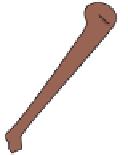
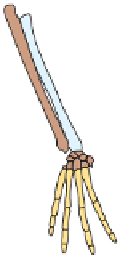















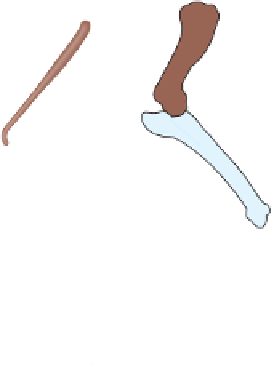

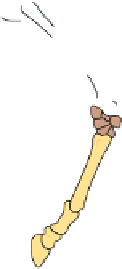

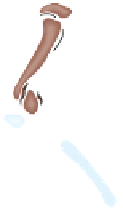






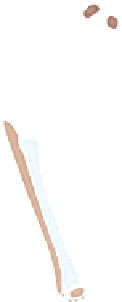


















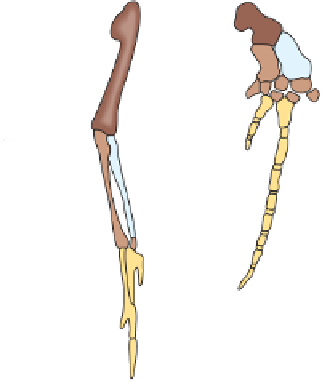
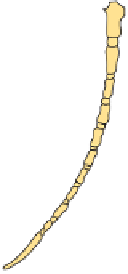

















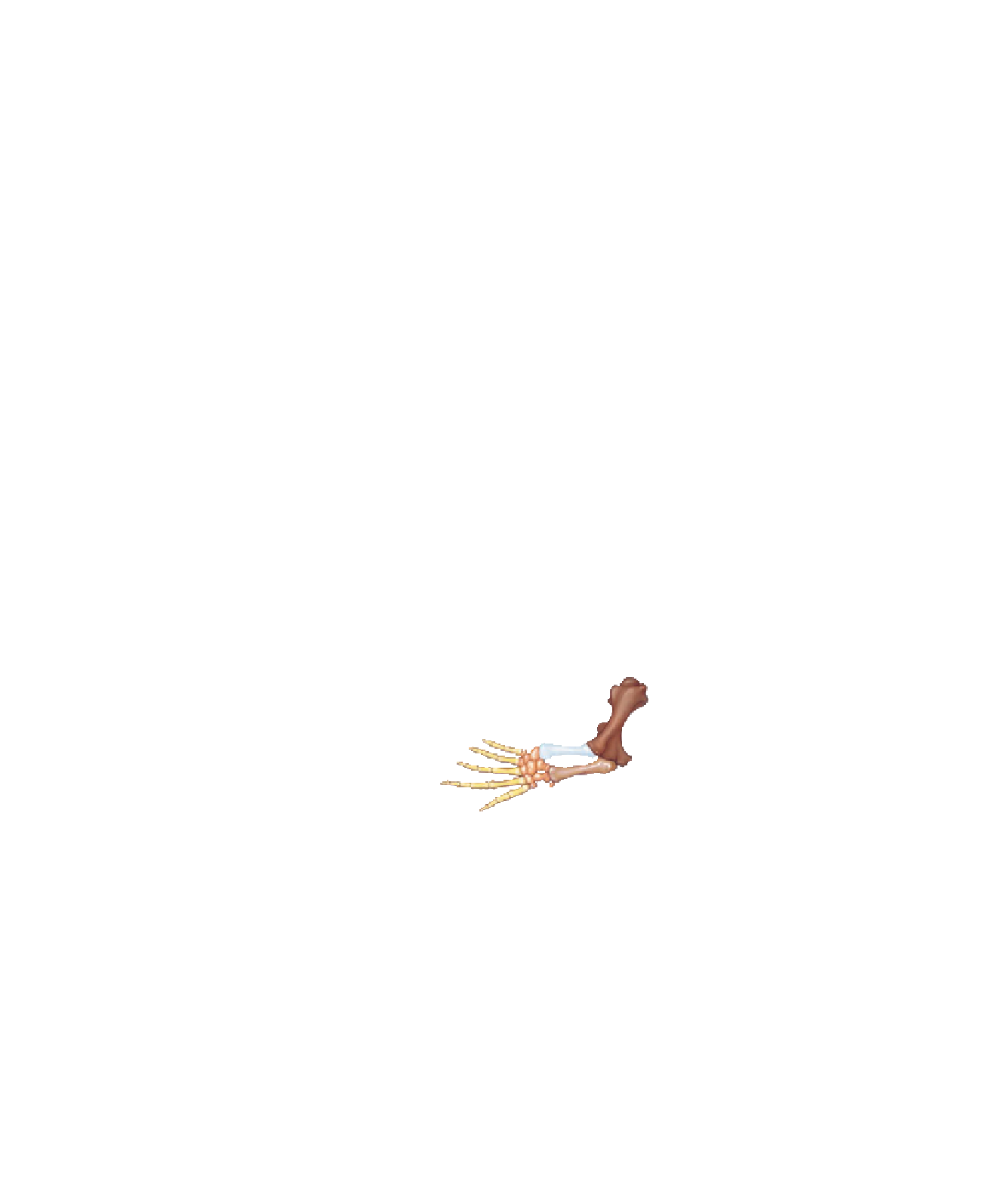
Search WWH ::

Custom Search